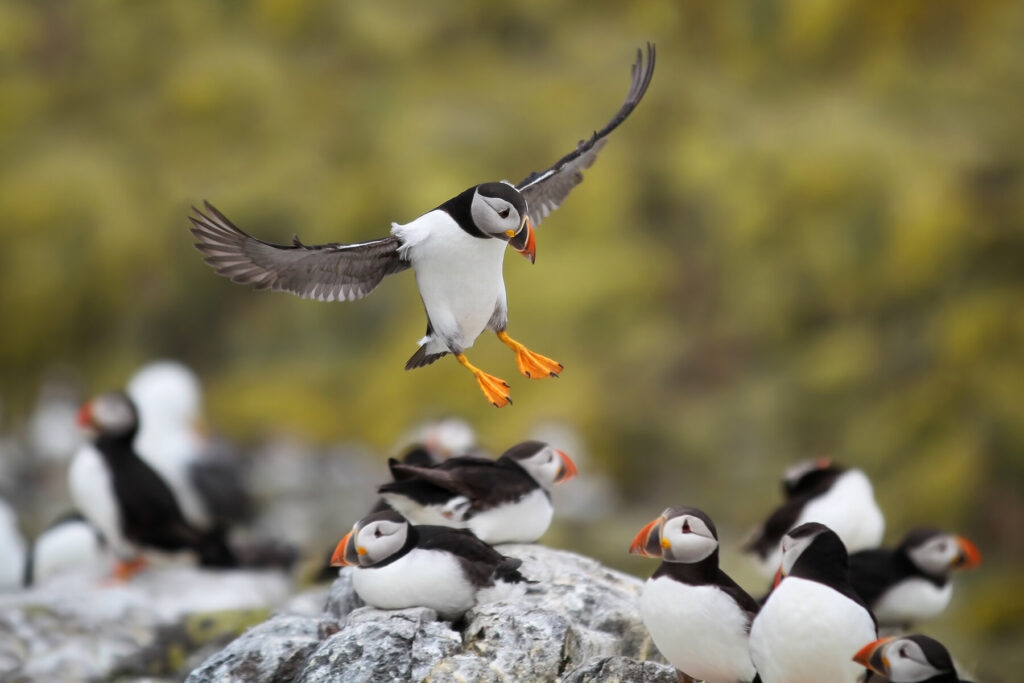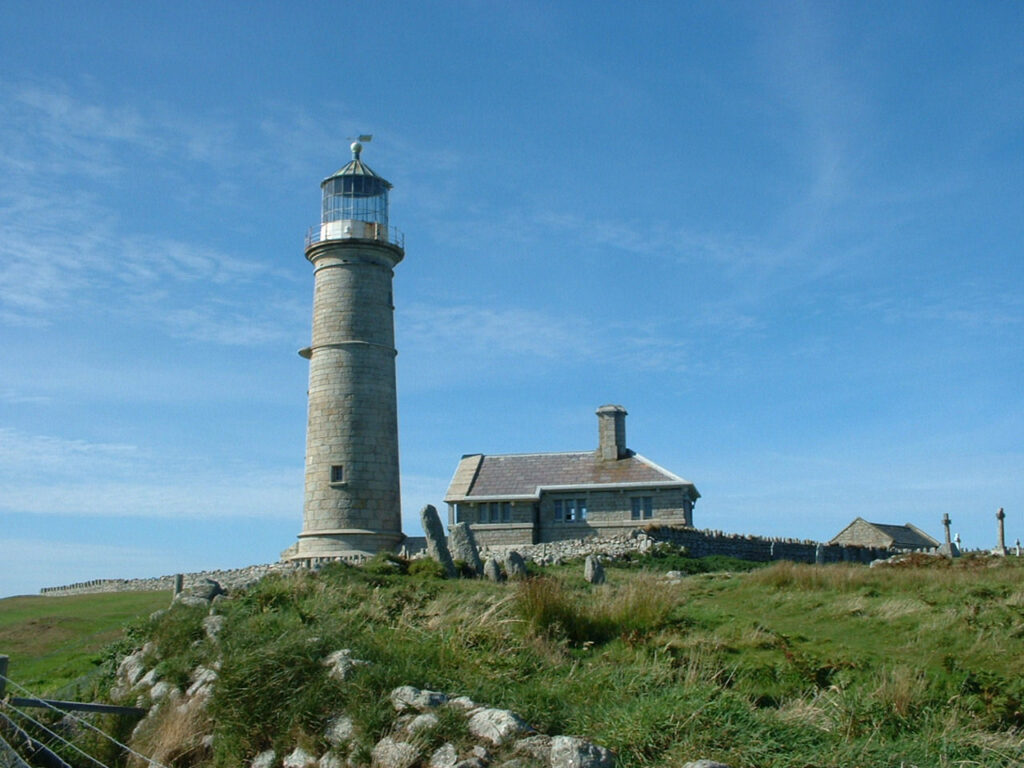Lundy inspires much interest, both nationally as well as further afield, enjoying, as it does, an unspoiled habitat (both terrestrial and marine) and a wealth of archaeology. It is now a Site of Special Scientific Interest as well as being made the UK’s first Marine Nature Reserve in 1986 and the UK’s first No Take Zone in 2003. It is rich in birdlife, with the iconic puffin making a comeback, thanks to ongoing conservation efforts, and supports rare lichens, including the golden hair lichen, which provides a splash of colour on the coastal rocks.
Why do people come to Lundy? For the character of the island itself and the tranquillity that is found there. For birdwatching, rock climbing or diving; for interest in the plants, the fungi, the lichens, or the archaeology and history; for walking; or simply for a rest with a few good books.
One thing is for sure – after one visit most people are caught by the Lundy spirit and return time and again to this special corner of North Devon.
What to see and do on Lundy
The wildlife
While the sea and its shore abound with life, there are almost no indigenous terrestrial mammals on Lundy. The pygmy shrew is the only one and can often be seen scurrying around properties and buildings in search of crumbs.
Until recent years there were no reptiles on Lundy, but slow worms are now being seen. There are generally plenty of rabbits, with a disproportionate number of black ones, which were much prized for their skins when Lundy was a Royal Warren.

Puffins start to come ashore in late March, returning to their former burrows above Jenny’s Cove. After breeding they shed their brightly coloured beak casing and spend the winter at sea. If you fail to see puffins on the cliffs around Jenny’s Cove you can sometimes spot their characteristic flight, with rapid wing beats, skimming close to the ocean’s surface, or ‘rafting’ in groups on the sea. Although puffins feed on a variety of small fish, sand eels are much favoured, and the classic photo of a puffin holding a quantity of these fish in its specially adapted beak is the one all puffin enthusiasts long to capture.
The town landmarks
Highlights include the cemetery, which contains four early Christian memorial stones dated between the 5th and 7th centuries, and the Old Lighthouse (Old Light), a disused lighthouse constructed at the highest point on the island in 1819. You can climb to the very top to enjoy wide panoramic views over the whole island and further. The castle overlooking the landing bay is also one of the island’s most significant buildings, with its hidden Benson’s Cave underneath.

Once you have visited the Lighthouse Battery continue northwards over a stile to Halfway Wall, with the big granite formations known as the Cheeses on your left. Before you cross the wall look back at the coast and south to the cliffs where Needle Rock sticks out of the sea.
Take a walk through nature
This walk allows you to enjoy the path along the sheltered east coast, where primroses, violets and foxgloves bloom in the spring and you are (mostly) out of the wind, and takes you to see puffins before heading to the Tavern for a final drink en route to boarding the Oldenburg. It will take roughly three hours, depending how long you spend puffin watching.
From the jetty, walk up the track, taking the right- hand path up past Milcombe House that is sign-posted ‘Village’. Beyond the house a flight of stone steps takes you up to the village; about two-thirds of the way up these steps, look for a wooden seat and a grassy path leading off to the right. This brings you close to the cliffs, with lovely views and splashes of colour from the flowers. After 20 minutes or so you’ll pass a towering rock face and the remains of one of the Victorian quarries, filled with water. This was stocked with golden orfe fish by Mr Harman and they still inhabit it today. Continue to VC Quarry and the memorial to John Harman VC. The inscription is hard to read but there is a rubbing of it in the Tavern.
Soon after VC Quarry there is a path, left, up to the main track where you turn right and walk north towards Halfway Wall. Just after a dip in the track and before the wall, keep your eyes peeled for a little path to the left that takes you to the remains of a German bomber. Retrace your steps to the wall, through the gate, and follow the wall to the west side of the island. You are heading for Jenny’s Cove and the puffins. On reaching the west coast path, cross the wall again via the stile and look for a jumble of rocks overlooking the sea.
This is your puffin-viewing platform; the landmark is Needle Rock, which looks like a hand emerging from the sea with a finger pointing up to the sky. Settle down on the rocks with your binoculars and scan the lower part of the cliff ahead for those telltale orange feet. You won’t get close to any puffins, but it’s still a thrill to see Lundy’s iconic bird, along with guillemots and razorbills, which from a distance look very similar to puffins.
Keep an eye on the time. You should allow an hour from here to the jetty, and will probably want to pause at the Tavern for some refreshment before you head for the boat.